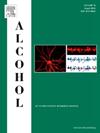疼痛预测过去一个月初成人酒精和大麻的共同使用:烟草和健康人口评估(PATH)研究的结果。
IF 2.9
4区 医学
Q3 PHARMACOLOGY & PHARMACY
引用次数: 0
摘要
酒精使用、大麻使用和疼痛是新兴成人(18-24岁)的公共卫生问题。同时使用酒精和大麻是一个特别令人关切的问题,因为同时使用酒精和大麻的个人使用的每种物质更多,受到的与物质有关的伤害也更大。疼痛和药物使用经常同时发生,越来越多的文献表明疼痛是药物使用的独特风险因素。当前研究的目的是检查中度/重度疼痛(与无/轻度疼痛相比)作为新兴成年人共同使用酒精和大麻的前瞻性预测因素,并测试性别作为这种假设关系的调节因素。数据来自烟草与健康研究人口评估的第1-5波(n = 3,544)。未经调整的逻辑回归显示,那些在基线时有中度/重度疼痛的人在过去一个月里同时使用酒精和大麻的可能性是未来四年的1.4倍(p = 0.046)。在纳入协变量和疼痛*性别相互作用项后,疼痛对共同使用的影响不再显著,也不显著(ps >.05)。这些发现初步支持了疼痛是初成年期酒精和大麻共同使用的风险因素。未来的研究应该继续调查疼痛如何激励酒精和大麻的共同使用,探索疼痛如何与其他共同使用的措施相关联,并确定提供者如何在临床环境中为新成年患者提供疼痛物质使用心理教育。本文章由计算机程序翻译,如有差异,请以英文原文为准。
Pain predicts past-month co-use of alcohol and cannabis among emerging adults: Results from the Population Assessment of Tobacco and Health (PATH) Study
Alcohol use, cannabis use, and pain are public health concerns among emerging adults (18–24 years old). Co-use of alcohol and cannabis is of particular concern since individuals who co-use alcohol and cannabis use more of each substance and experience greater substance-related harm. Pain and substance use frequently co-occur, and a growing body of literature indicates pain is unique risk factor for substance use. The goal of the current study was to examine moderate/severe pain (vs. no/low pain) as a prospective predictor of engaging in co-use of alcohol and cannabis among emerging adults, and to test sex as a moderator of this hypothesized relationship. Data were drawn from Waves 1–5 of the Population Assessment of Tobacco and Health Study (n = 3544). Unadjusted logistic regression revealed that those with moderate/severe pain at baseline were 1.4 times more likely to engage in past-month co-use of alcohol and cannabis over the next four years (p = .046). The effects of pain on co-use were no longer significant after inclusion of covariates and a pain∗sex interaction term, which was also nonsignificant (ps > .05). These findings provide initial support for pain as a risk factor for engaging in co-use of alcohol and cannabis during emerging adulthood. Future research should continue investigating how pain may motivate co-use of alcohol and cannabis, exploring how pain is associated with other measures of co-use, and determining how providers can incorporate pain-substance use psychoeducation for emerging adults in clinical settings.
求助全文
通过发布文献求助,成功后即可免费获取论文全文。
去求助
来源期刊

Alcohol
医学-毒理学
CiteScore
4.60
自引率
4.30%
发文量
74
审稿时长
15.6 weeks
期刊介绍:
Alcohol is an international, peer-reviewed journal that is devoted to publishing multi-disciplinary biomedical research on all aspects of the actions or effects of alcohol on the nervous system or on other organ systems. Emphasis is given to studies into the causes and consequences of alcohol abuse and alcoholism, and biomedical aspects of diagnosis, etiology, treatment or prevention of alcohol-related health effects.
Intended for both research scientists and practicing clinicians, the journal publishes original research on the neurobiological, neurobehavioral, and pathophysiological processes associated with alcohol drinking, alcohol abuse, alcohol-seeking behavior, tolerance, dependence, withdrawal, protracted abstinence, and relapse. In addition, the journal reports studies on the effects alcohol on brain mechanisms of neuroplasticity over the life span, biological factors associated with adolescent alcohol abuse, pharmacotherapeutic strategies in the treatment of alcoholism, biological and biochemical markers of alcohol abuse and alcoholism, pathological effects of uncontrolled drinking, biomedical and molecular factors in the effects on liver, immune system, and other organ systems, and biomedical aspects of fetal alcohol spectrum disorder including mechanisms of damage, diagnosis and early detection, treatment, and prevention. Articles are published from all levels of biomedical inquiry, including the following: molecular and cellular studies of alcohol''s actions in vitro and in vivo; animal model studies of genetic, pharmacological, behavioral, developmental or pathophysiological aspects of alcohol; human studies of genetic, behavioral, cognitive, neuroimaging, or pathological aspects of alcohol drinking; clinical studies of diagnosis (including dual diagnosis), treatment, prevention, and epidemiology. The journal will publish 9 issues per year; the accepted abbreviation for Alcohol for bibliographic citation is Alcohol.
 求助内容:
求助内容: 应助结果提醒方式:
应助结果提醒方式:


